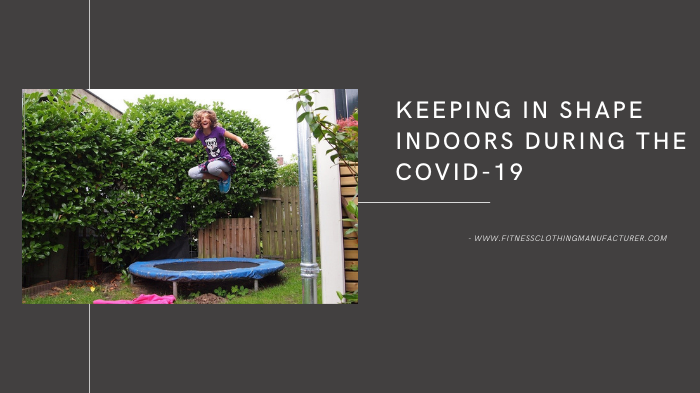Keeping In Shape Indoors During The COVID-19

In the wake of the Coronavirus (COVID-19) pandemic, life, as we know it, has changed. Many businesses have temporarily closed down, including gyms. A considerable number of people have been left with no option but to stay at home.
But between working from home and keeping your family safe, it may be tempting to relax on the couch all day and develop an unhealthy lifestyle. In the United States, 68% of respondents are reluctant to go to the gym to contract the virus.

The good news is, it is possible to continue your fitness routine from home. A fun and safe way to start the fitness journey is by investing in a quality leap and rebounder; it can help you continue with your fitness journey without regular training and workout sessions in the gym.
What is Rebounding?
Rebounding is an aerobic form of exercising while jumping on a mini-trampoline. It is an excellent way of achieving a full-body workout. It strengthens muscles, increases endurance, protects the immune system, among many other benefits.
Why is Rebounding Ideal for Quarantine Life?
Most exercises are limited to small spaces. However, a mini-trampoline is small in size, so it doesn’t consume a lot of space. With this in mind, you get to complete an entire session without literally getting off your trampoline.
Moreover, most mini trampolines have collapsible legs that makes them easy to store after work out sessions. These features make them convenient for any in-house set-up.
At Home Rebounder Work-outs
1. Jumping Jacks
Doing jumping jacks on a rebounder may feel a little bit different. The first step is getting on the rebounder with your feet and shoulder-width apart, then slightly bend your knees. Jump your feet out as you lift your arms overhead; the aim is to bring your hands together at the top. Jump with your feet back together and get your arms by your side on the waist. Repeat the process several times up and down the rebounder.
2. Twists
Keep a bend in your knees as you place your feet together with your legs as close as possible. Then repeat on the other side with your feet to the left and arms to the right.
3. Shuffle
With a slight bend in your knees, stand width apart with your width shoulder. With your feet, shuffle your right foot forward, then mix with your left foot back rhythmically. Repeat the same process on your opposite side up to ten times.
4. Let’s Ski
In this process, you start with your feet together at the center of the rebounder. You zip up your legs to lock them together with a bend in the knees. Jump from right to left with everything locked together. Keep your arms on your elbows, moving back and forth, in line with your feet jumping as if you are skiing.
5. Pelvic Floor Bounce
If you need to work on your pelvic floor using a rebounder, you need first to place a ball beneath your knees as you bounce slowly, your breath into your pelvis. Squeeze your inner thighs as you breathe out; this should take 2-5 minutes.
Reasons Why you Should Try Rebounding
- Helps improve endurance
- Supports bone strength and density
- Supports the pelvic floor health
- May help in the removal of toxins, bacteria, and other waste products


















